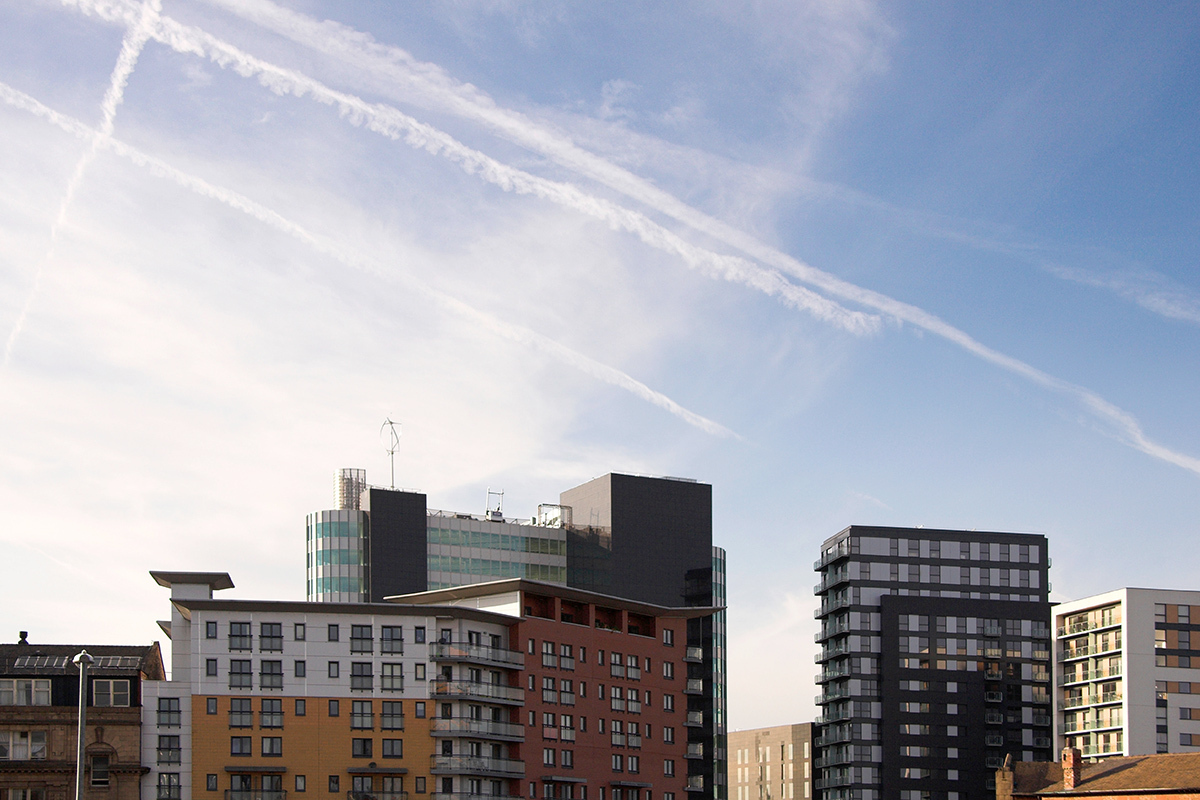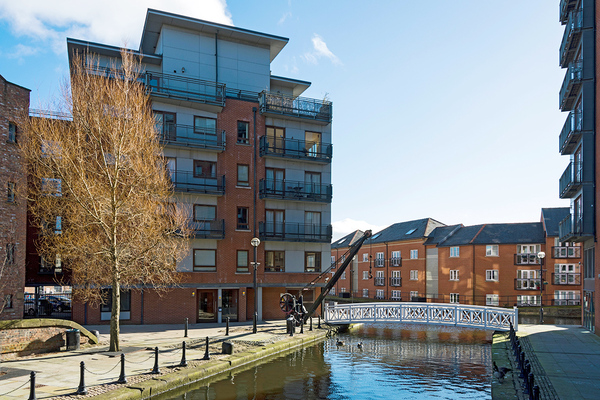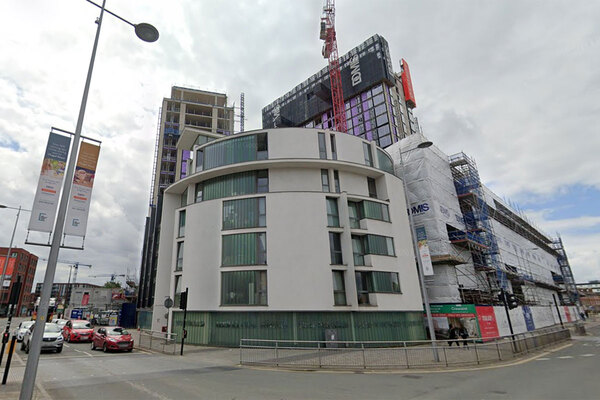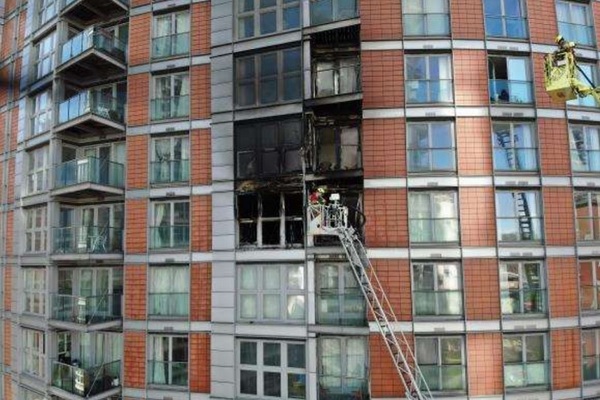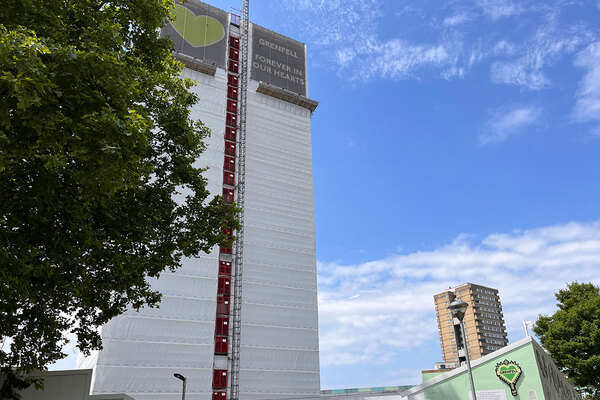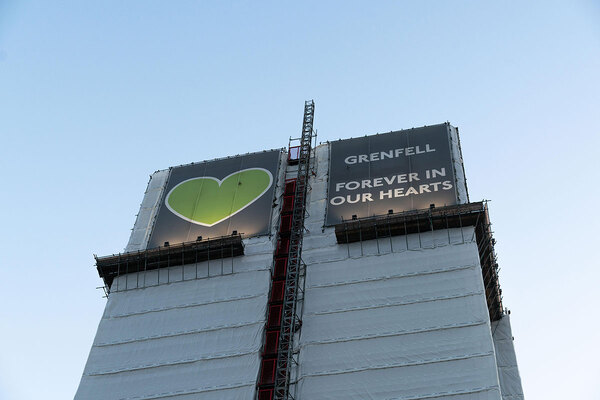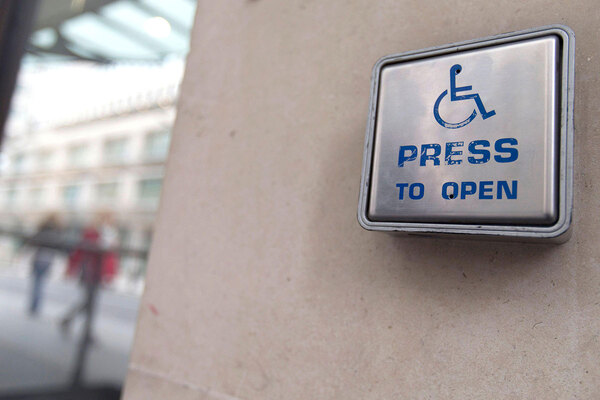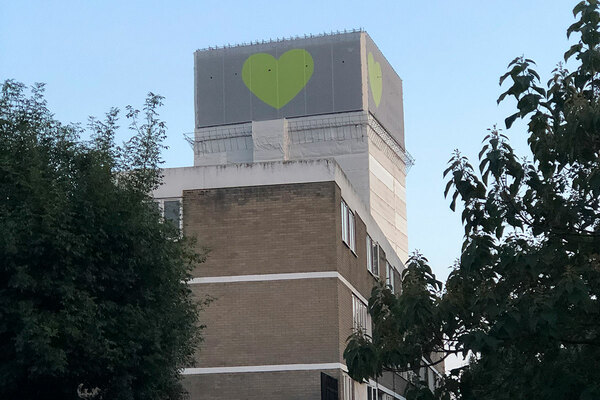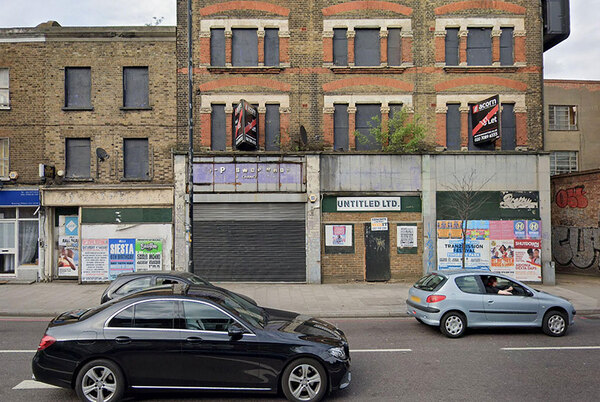‘They have swapped one unsafe building for another’: the story of Kennington Park Square
When a gas explosion forced the demolition of a council housing tower in 1999, it was was replaced with private housing. But the replacement block now faces serious safety issues of its own. Peter Apps reports
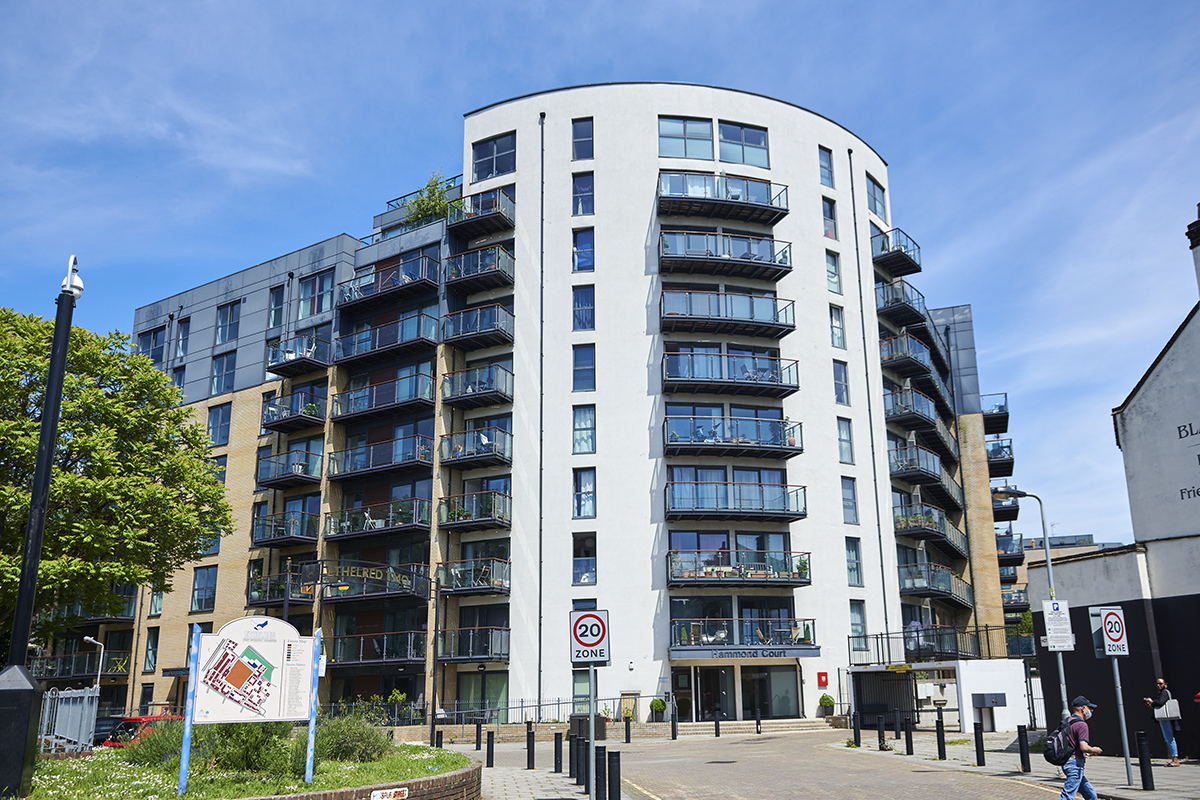
Kennington Park Square sits rather incongruously in the middle of a post-war council estate, like a shiny new car in a line of old ones.
It could serve as a stock image of modern apartment blocks: sand-coloured brick, balconies, white render and a topping of grey cladding near the roof. We all walk past hundreds of blocks just like it – anonymous, neat and functional – in cities all over the country, barely registering that they are there.
But this block and the site it sits on have a story to tell. The building is one example of the failure of the UK’s housing policy over several decades and how we have built our way from one building safety crisis to another.
In 1997, this site was the home of Kerrin Point – a 22-storey council-owned tower block within the Ethelred Estate in Lambeth, south London, which had stood on the site for almost 30 years. On 26 June, residents of the 86 flats were woken by an enormous explosion.
The communal boiler at the base of the tower had exploded. Miraculously, no one died, but the block was damaged, 11 residents were injured and hundreds were made homeless. A local resident recalls dazed children arriving at school in their pyjamas, with no idea where they would be sleeping that night.
A month later, the community marched the one-and-a-half miles over Lambeth Bridge to Downing Street to protest that they still had not been properly rehoused.
In 1999, Lambeth Council would plead guilty to health and safety offences and pay a £75,000 fine. A Health and Safety Executive investigation found a negligence by its sub-contractors during a refurbishment of the block: they had commissioned the gas burners while not being competent or registered. The judge described the episode as “an appalling case of neglect”.
An academic paper written by Ronald Craig for Loughborough University in December 2000 said that the council had “failed to retain sufficient expertise” when refurbishing the block, “which resulted in failure to monitor and control the work of its contractors”.
A refurbishment of a council-owned London tower block causing a disaster and displacing residents – the parallels with the Grenfell Tower fire are not difficult to draw out.
But then came the next stage. The tower was demolished by controlled explosion in 1999. At this point, the council was hoping to incorporate the entire estate – which sits in a prime location near the river and the centre of London – into ‘Project Vauxhall’, and carry out a full-scale ‘regeneration’. But this never came to pass, with a resident ballot rejecting the proposals in 2000.
The former site of Kerrin Point lay dormant – the rubble was cleared away and it was landscaped into open space, including a children’s playground. But in 2004, the council elected to dispose of the site and sold it to Barratt Homes for development.
This development was completed in 2009, and Kennington Park Square was built: 214 new homes across five medium-rise blocks. Of these, 57 were for social rent and 35 were for shared ownership, purchased by housing association Wandle.
Barratt sold the private properties, netting around £250,000 each, and eventually also sold the freehold of the block to a private investor.
Over the years, with some feelings of frustration about the way the block was managed, residents set up their own company to manage the building. By now it was 2020, three years after the Grenfell Tower fire, and mortgage lenders around the country were requiring forms declaring the safety of the buildings before flats could be sold.
A report was commissioned by the residents’ company and it reported in February 2020. The findings were damning but, at least to those who have followed the revelations emerging from the building safety crisis, not surprising.
The external cladding was labelled ‘limited combustibility’, but behind it was a phenolic foam insulation that was well below required fire safety standards. And within the cladding system, the required cavity barriers were either missing or defective.
This story is brutally familiar because it is now so common. There are almost 3,500 buildings above 18 metres tall that are seeking funding for the remediation of similar faults. This equates to one in every four in England.
There is no official figure for the number of medium rises, but it will certainly stretch into the tens of thousands. All told, millions live in blocks with similar faults to Kennington Park Square.
“I feel like everybody involved in this building has dropped us like a hot coal”
And most of them face a similar struggle. As a result of the findings, the assessor decided it was a system that would not pass a large-scale test and required remediation. The report was shared with Barratt in May 2020. The builder carried out their own review. This was provided to residents in January this year, and essentially confirmed the findings. Remediation was required and it would cost £6m.
But this was not the only cost. In July 2020, the report was shared with the London Fire Brigade, which responded to say that if the block did not have a ‘waking watch’ patrol of fire wardens put in place within four hours, it would need to be evacuated.
This was done, but at a cost that would need to be met by residents through their service charges. A common fire alarm was installed at a cost to residents of £150,000, bringing the waking watch to an end. By this point, it had cost them £450,000.
Their building insurance is up for renewal this month, and they expect similar rises to others in their position, who have seen fees increase by sums of up to 500%.
Added to the cost of the various surveys and professional fees, it means the leaseholders have paid out £870,000 already, more than £4,000 each, without a single panel of insulation being removed or cladding panel replaced.
The right to manage company – run by residents of the block – has been left in the invidious position of billing their neighbours for the funds.
These costs have been difficult to manage. One resident has sold furniture, others have been forced to skimp on clothes for their children or heating bills to make ends meet.
Martin Gerhard, a Wandle shared owner who paid £90,000 for a one-third share of his apartment, says he lost his job in interior design due to the pandemic last year. He is trying to set himself up as an online trader, but has already run into debt.
“My service charge used to be £180 per month, now it’s £430,” he says. “I can’t afford to pay that and I’m already in arrears to the tune of £2,000.”
He has submitted a complaint to Wandle about what he describes as the association’s failure to communicate about the situation. He received a response assuring him that the right to manage company only passed on costs where “absolutely necessary” and encouraging him to write to his MP.
“I feel like everybody involved in this building has dropped us like a hot coal,” he says.
Another resident, Natasha Alexander, had to ask her partner’s father to use his retirement savings to cover the bills. A family of four stuck in a one-bedroom flat and unable to sell, they have had to move out and rent as well as pay their mortgage and service charge – doubling the costs they face.
Another resident says he has had a breakdown due to the stress, quit work and been prescribed antidepressants. “I’m furious that Barratt hasn’t so far taken any responsibility for the mess they put us in,” he says.
The social tenants, meanwhile, have seen their monthly bills rise by around £12 – although Wandle insists that this is not because of the fire safety costs.
“I’m furious that Barratt hasn’t so far taken any responsibility for the mess they put us in”
Nonetheless, they still face the trauma of living in an unsafe block in the aftermath of the Grenfell Tower fire. One resident told Inside Housing that her daughter no longer comes into the flat after school and sits at the bus stop opposite until her mother gets home from work because she is scared of a fire breaking out.
Four of the five blocks have applied for help from the Building Safety Fund, but are yet to receive confirmation of whether they are successful and what sum of the works will be covered by the fund. The final block, below 18 metres, is ineligible for funding. The government has promised loans to help residents of blocks such as this pay the bills, but these will not be available for around two years.
Barratt, meanwhile, has promised to provide assurances about how the remediation will be funded but has so far failed to do so. It has no legal obligation to the block: it no longer owns the freehold and developer liability for faults is limited by statute to six years. This expired in 2015. The residents are wholly reliant on the builder’s goodwill.
Cut into this story and you see the failures of our country’s housing policy layered through it like the rings of a tree. A council housing block is neglected, rendered unsafe, demolished and rebuilt as private housing. But this development is done poorly and when these flaws come to light, no one can be held to account.
In the end, this is a system that has made everyone a victim: those who lived in Kerrin Point in 1997 and those who live in Kennington Park Square now.
“They have just swapped one unsafe building for another,” says Mr Gerhard. “How the hell can that happen?”
Responses
A spokesperson for Barratt Developments said: “The development was built in 2009 and signed off as meeting the requirements of building regulations by an independent approved inspector at the time of construction.
“While we have no legal liability, we have been working to assess and understand the issues at the development and are committed to working with the managing agent and freeholder to help them find a solution for leaseholders and residents.”
Maria Ramos, head of customer service delivery at Wandle, said: “Kennington Park Square is a private development of just over 200 properties, where Wandle is the landlord for a number of leaseholders, shared owners and tenants. In February 2020, Kennington Park Square right to manage company took over the day-to-day management of all homes, following the mobilisation of a residents’ association, which we supported in full. At around the same time, a major change in fire safety requirements came into place.
“Since then, we have been in regular communication with the appointed managing agent, and the right to manage board, regarding the fire safety concerns at Kennington Park Square. We have been impressed with the efficiency of the KPS board and the appointed managing agent in submitting applications to the government’s Building Safety Fund, and liaising with other relevant parties, to try to minimise the cost of remedial works to leaseholders.
“As leaseholder for the tenanted homes, we have also faced significant bills for remedial works, and the waking watch that was in place for the site until very recently. We hope that the application to the Building Safety Fund is approved, and as many costs as possible are able to be reimbursed.
“We recognise that this is an incredibly worrying and stressful time for residents, especially homeowners, and are offering flexible case-by-case support for any shared-owners who are facing financial difficulties as a result of these bills.”
